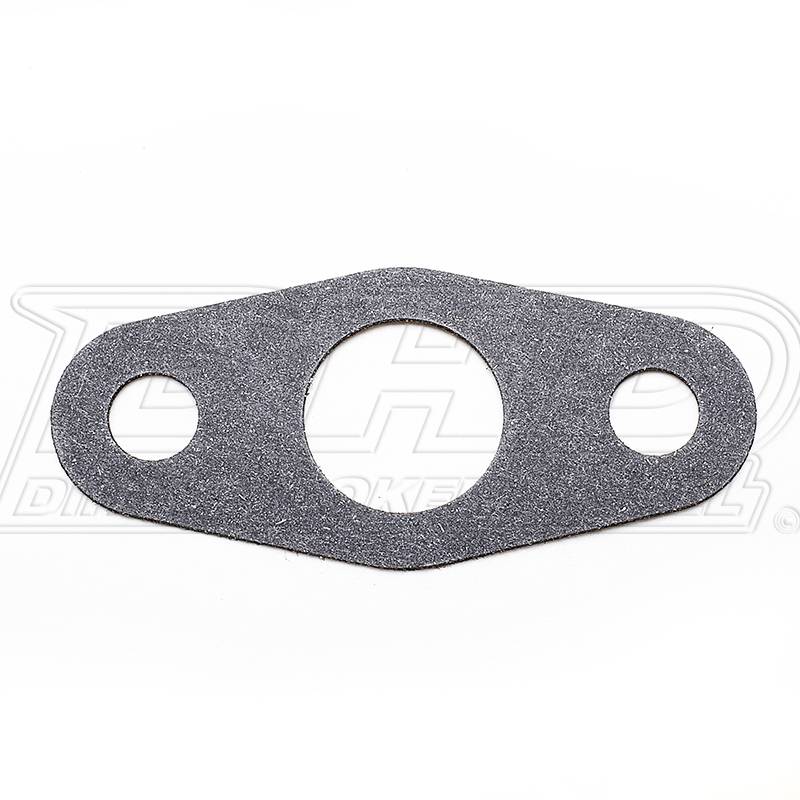Ebay seller just sent me these instructions. Seems like a hassle to me to anneal before use. Plus I don't like the idea of having to coat it in copper spray or RTV as that kind of defeats the purpose. I didn't want any to block the oil return opening when torqued down.
------------------------------------------------------------------------------------------------------------------------------------------------------------------------------------------------------------------------------------------------------------------
Copper Gasket Annealing Instructions:
NOTE: Be sure to have a tub of water at room temperature that is big enough to immerse the gasket all at once. This needs to be ready so that when the gasket reaches the desired temperature, it can be immersed immediately. Please read the complete instructions prior to starting annealing process.
The purpose of annealing copper gaskets is to soften and temper the material so that it will seal well. If you have torn down your engine, and are re-using the copper gasket, you will have much better results if you take the time and effort to anneal it properly. Also, our gaskets are not annealed prior to shipping, and, although our copper is soft, sometimes it sets in storage either here or at suppliers and oxidizes, which hardens the copper. If the gasket appears to be oxidized (dull or darkened), we suggest you anneal it prior to initial installation.
Annealing process:
1. Use an oxygen/acetylene torch with a rosebud tip. Hang the gasket with a wire, keeping it away from any flammable surface to prevent burning yourself, your equipment or your shop. As evenly as possible, heat the gasket, using a figure eight pattern. Watch for the copper's changing colors: first stage, blue; second stage green; final stage, orange (which is molten). Heat it just to the orange stage. Making sure not to touch the hot metal (we suggest you use pliers or kitchen thongs) drop it in the water immediately. Attempt to have the flat surface of the gasket submerge all at once. Otherwise, the temper may vary. Your gasket is now annealed.
2. Prior to installation, the gasket needs to be cleaned. To clean the gasket, use a Scotch-Brite or an SOS pad. Scrub until gasket turns a pink color. Hang it back up and spray it off with brake cleaner, or you may also let it drip dry. It is now ready for sealer and installation.
------------------------------------------------------------------------------------------------------------------------------------------------------------------------------------------------------------------------------------------------------------------
Copper Gasket Installation Instructions
While copper is an excellent gasket material, it does require special attention to achieve a long lasting seal. For best results, follow the installation instructions detailed below.
1. Check the fit of the gasket. If any dimensions are out of tolerance, don’t hesitate to notify us. We at Copper Gaskets Unlimited urge our customers to help us maintain our high standards as to the fit and design of our product.
2. Make sure all the sealing surfaces are very clean and dry. Once you are ready to install your CGU gaskets, be careful to touch only the edges. An oily fingerprint on the sealing surface can cause gasket failure.
3. When the surfaces are properly prepared, apply gasket sealer to both sides of your gasket only. We recommend Permatex Ultra Gray3294 sealer or Copper coat. Wait ten minutes for the sealer to cure.
4. Assemble the engine following OEM specifications, again making sure not to compromise the seal with oil or grease of any kind. During assembly, pay special attention to the condition of the threads on all nuts, bolts and studs. Dirt, rust
or other contamination can cause torque specs to be reached before proper bolt stretching occurs. Torque the head bolts to the recommended setting and in the proper sequences. After assembly, allow the sealer to fully cure for 24 hours, then start the engine and allow it to reach operating temperature. Then shut it down and recheck the torque on all the fasteners. When everything has again cooled, check the torque for a third time.
5. After the first time out with your machine, recheck the torque to be sure nothing has settled and lessened the pressure on your CGU gasket.
Follow these instructions, and your CGU gasket should last as long as the engine.
COPPER GASKETS UNLIMITED
515 E. Carefree Hwy., #673
Phoenix, AZ 85085
(623) 340-4300
www.coppergaskets.us
Check us out!!!
------------------------------------------------------------------------------------------------------------------------------------------------------------------------------------------------------------------------------------------------------------------


